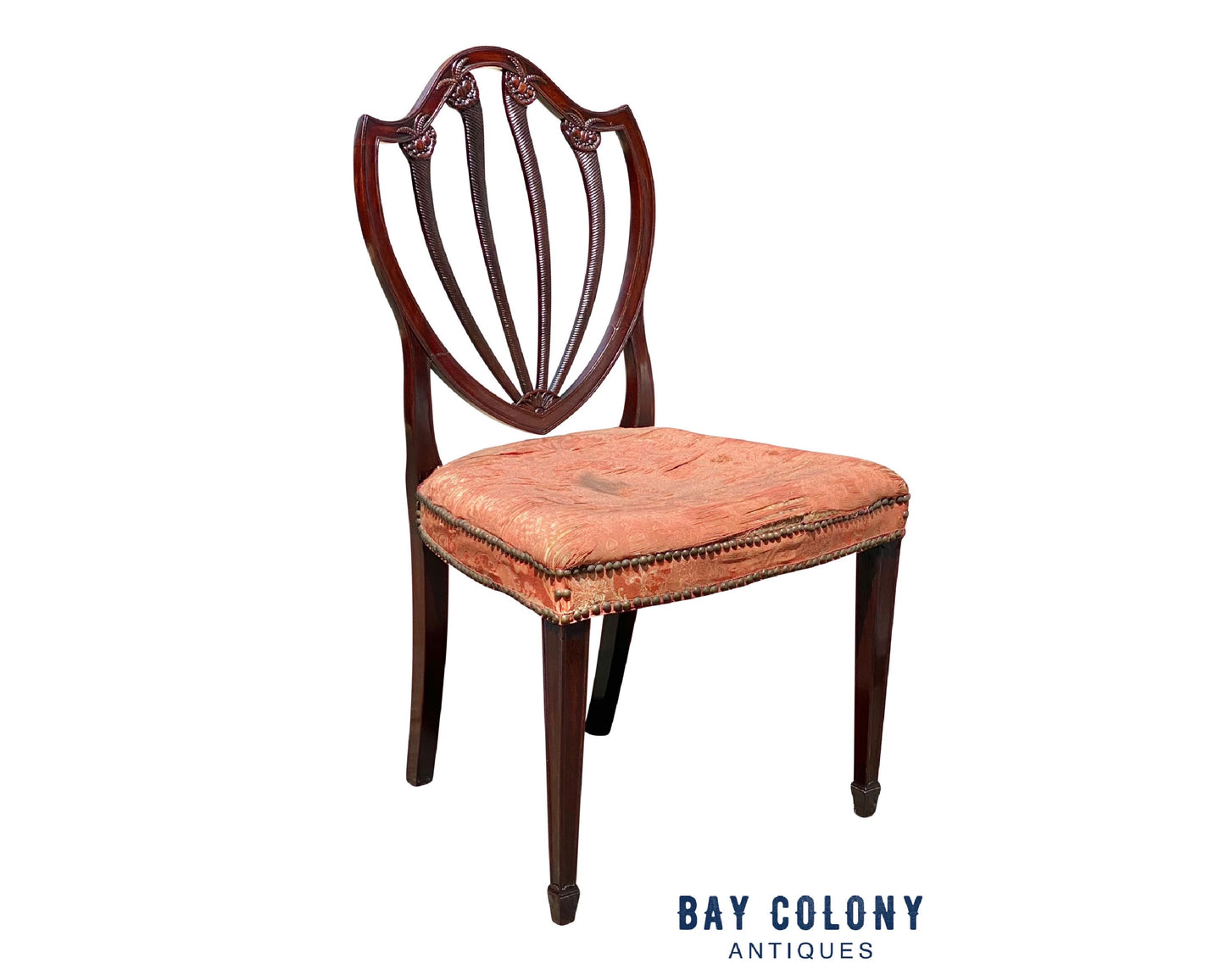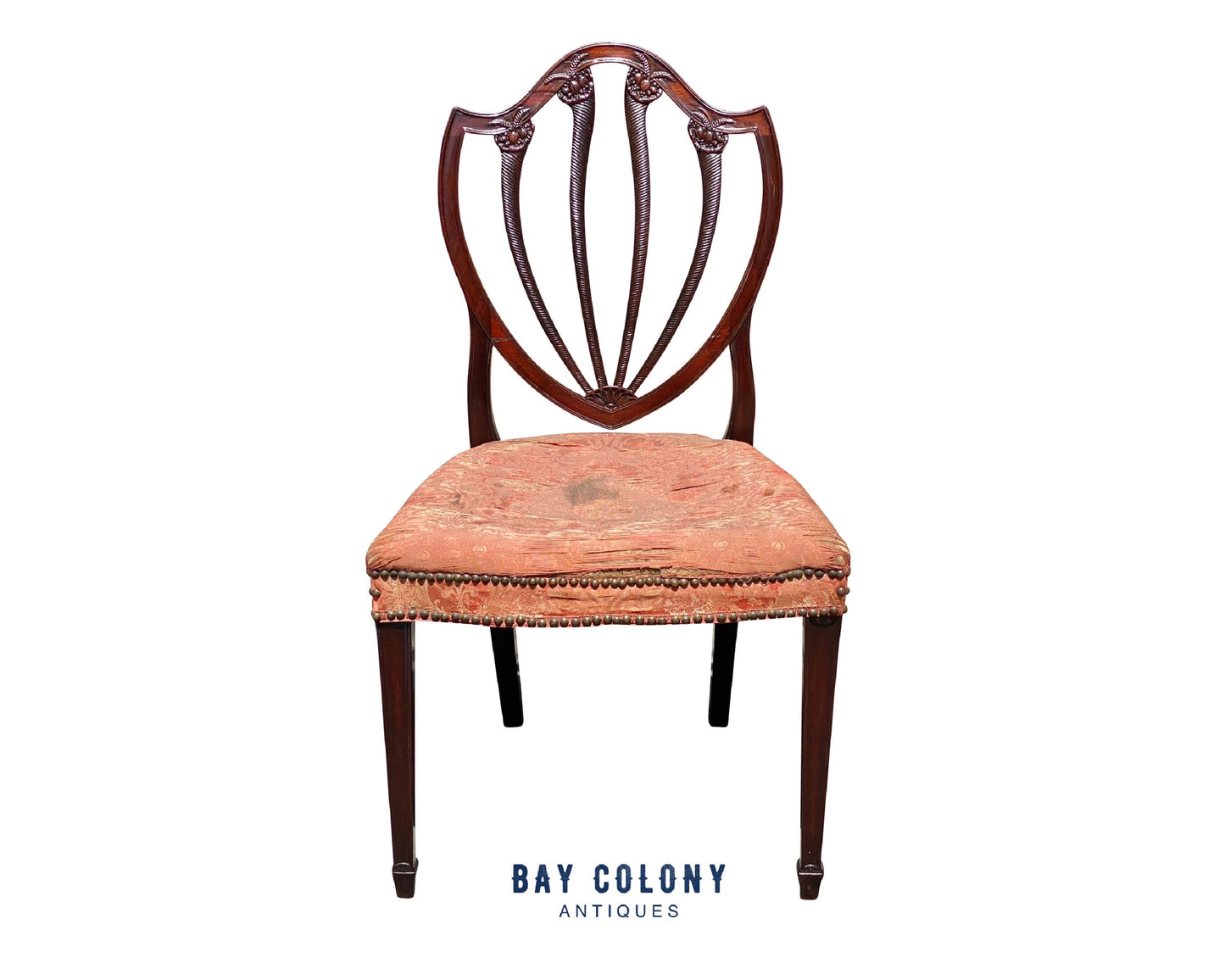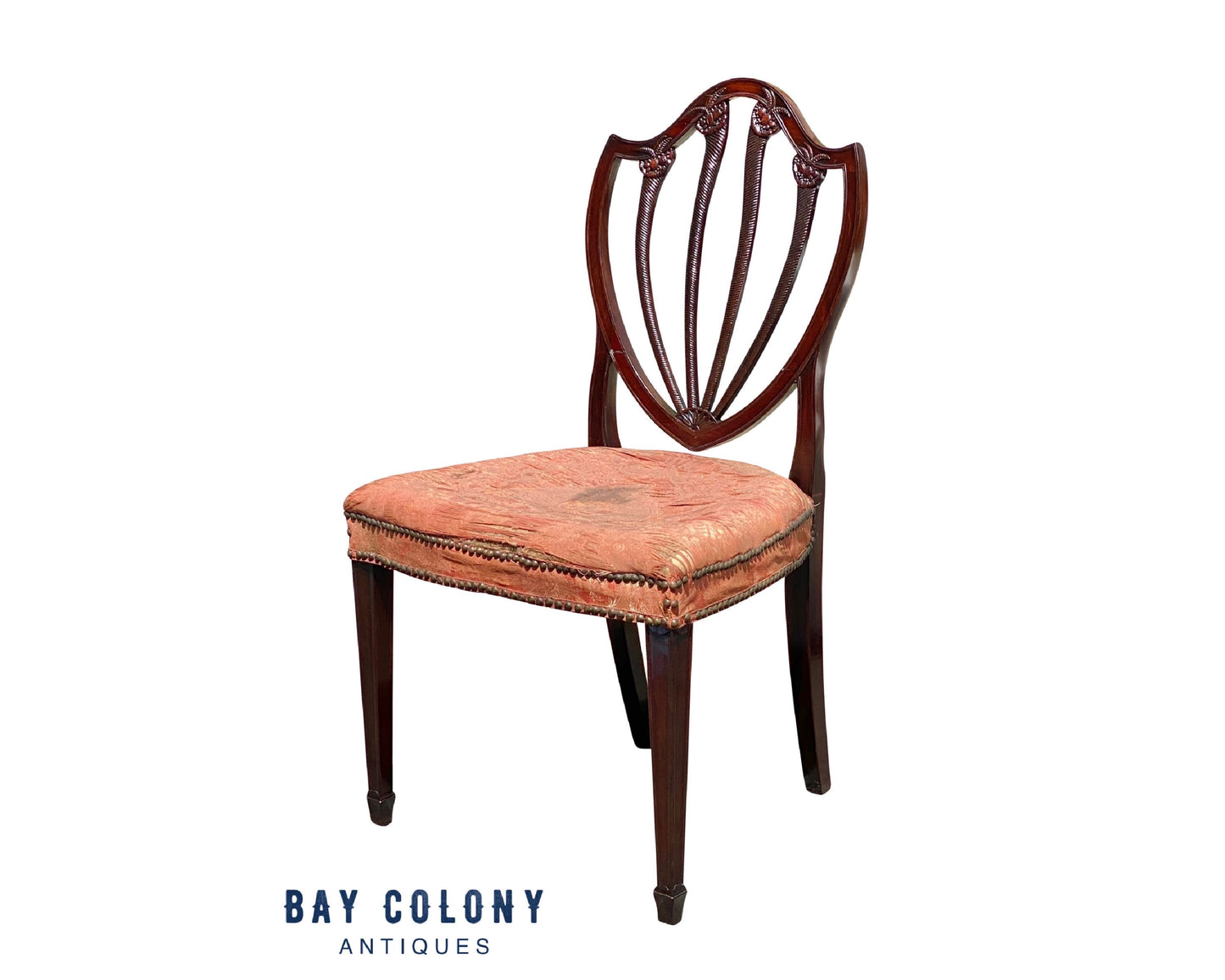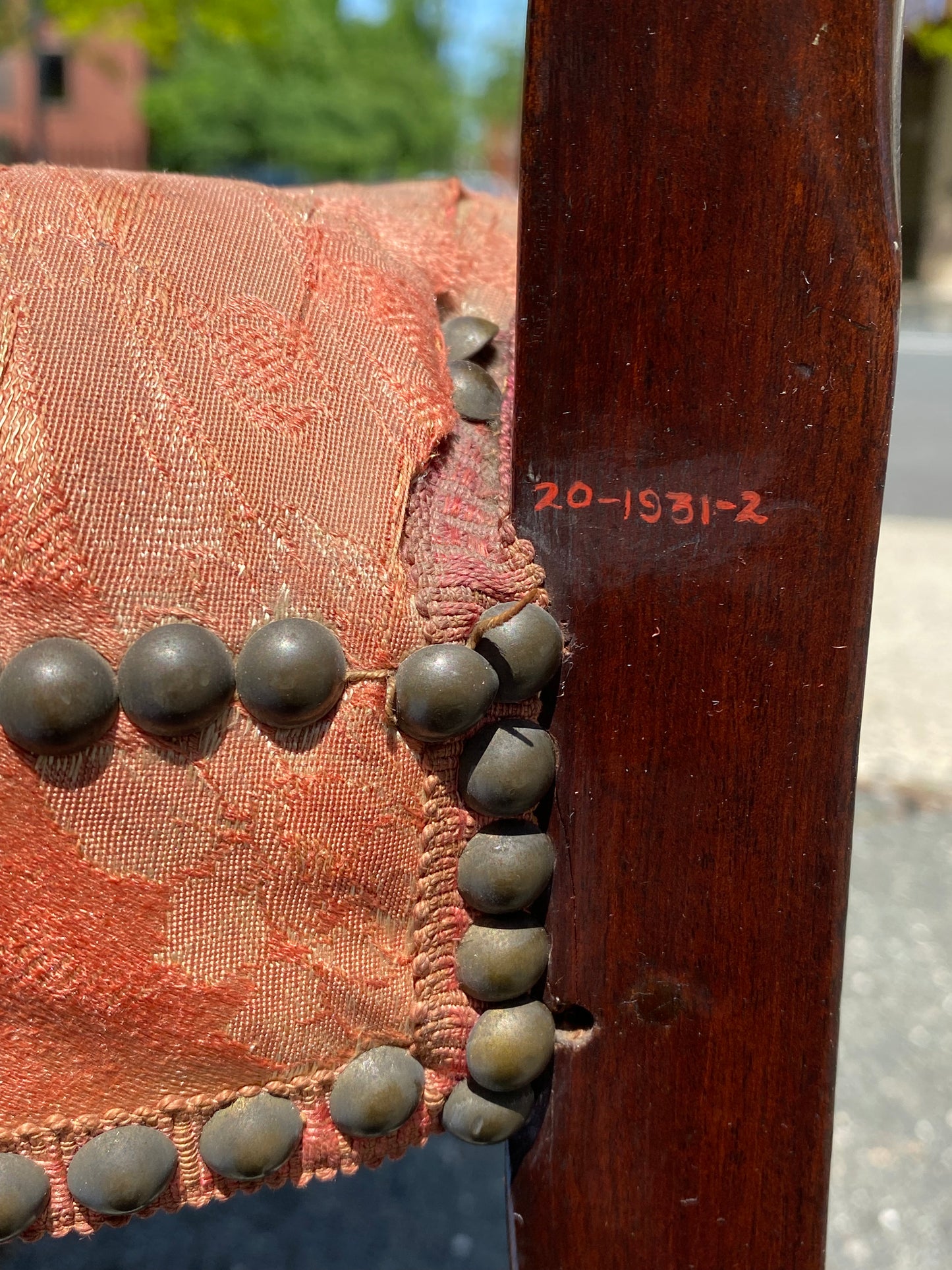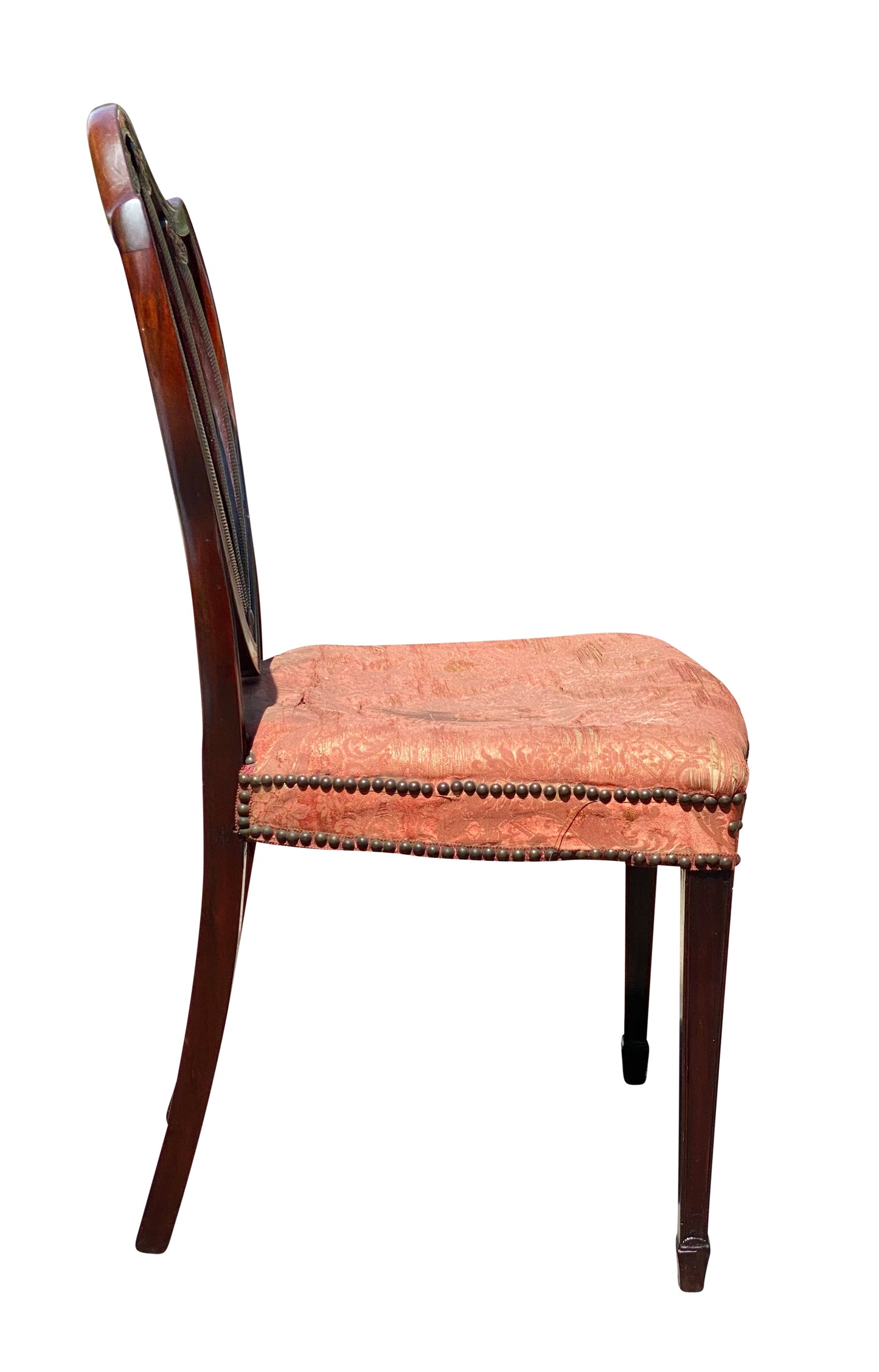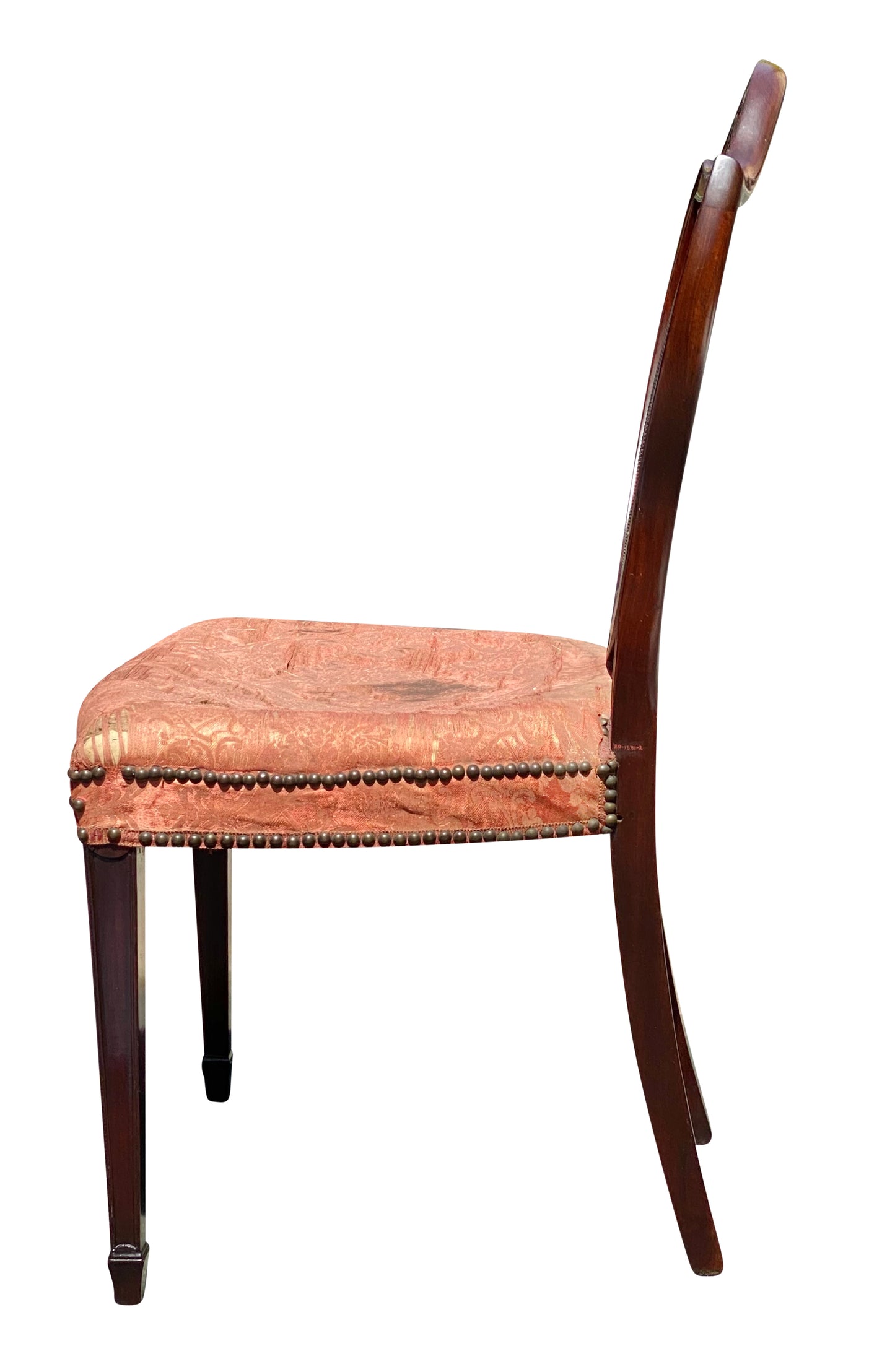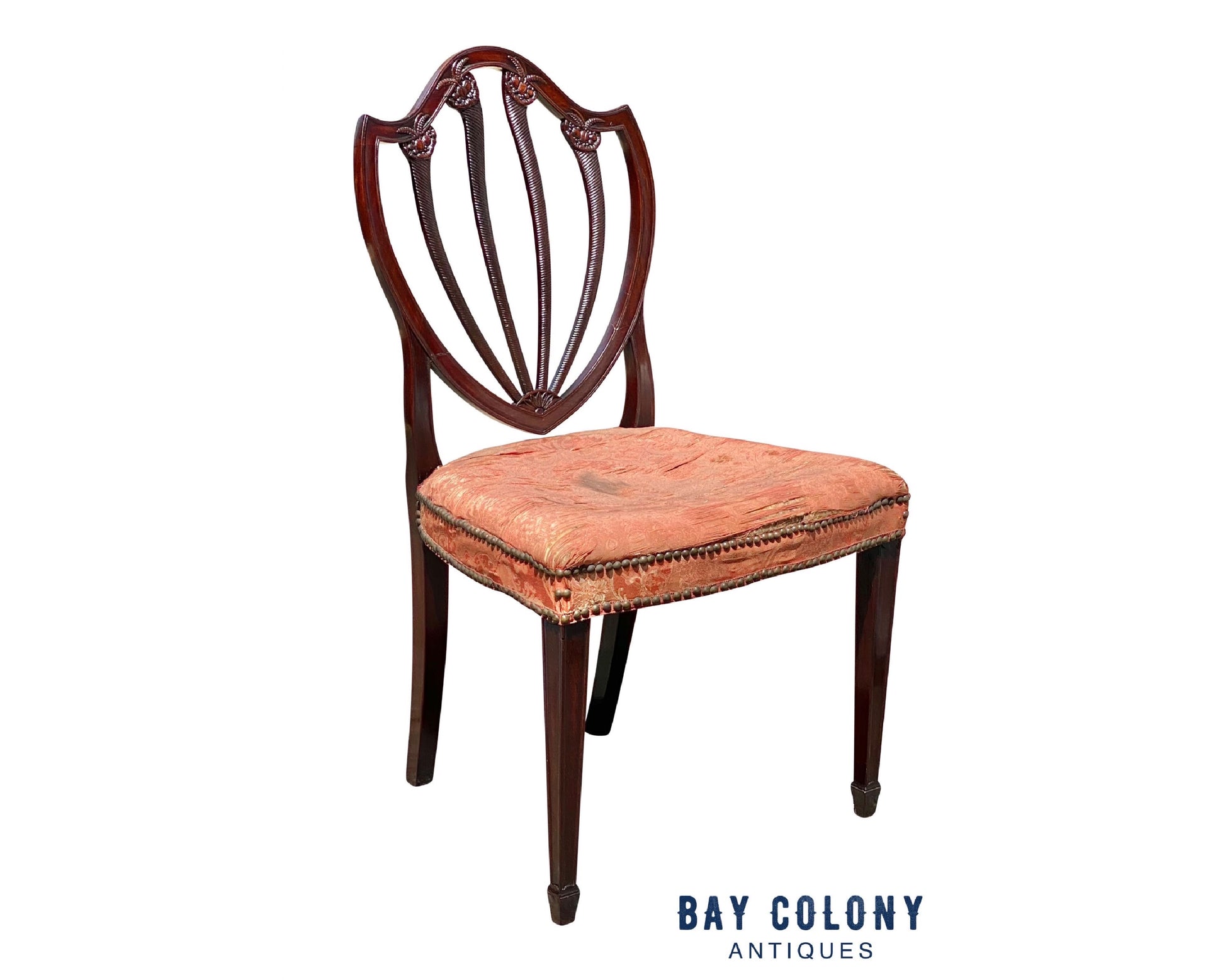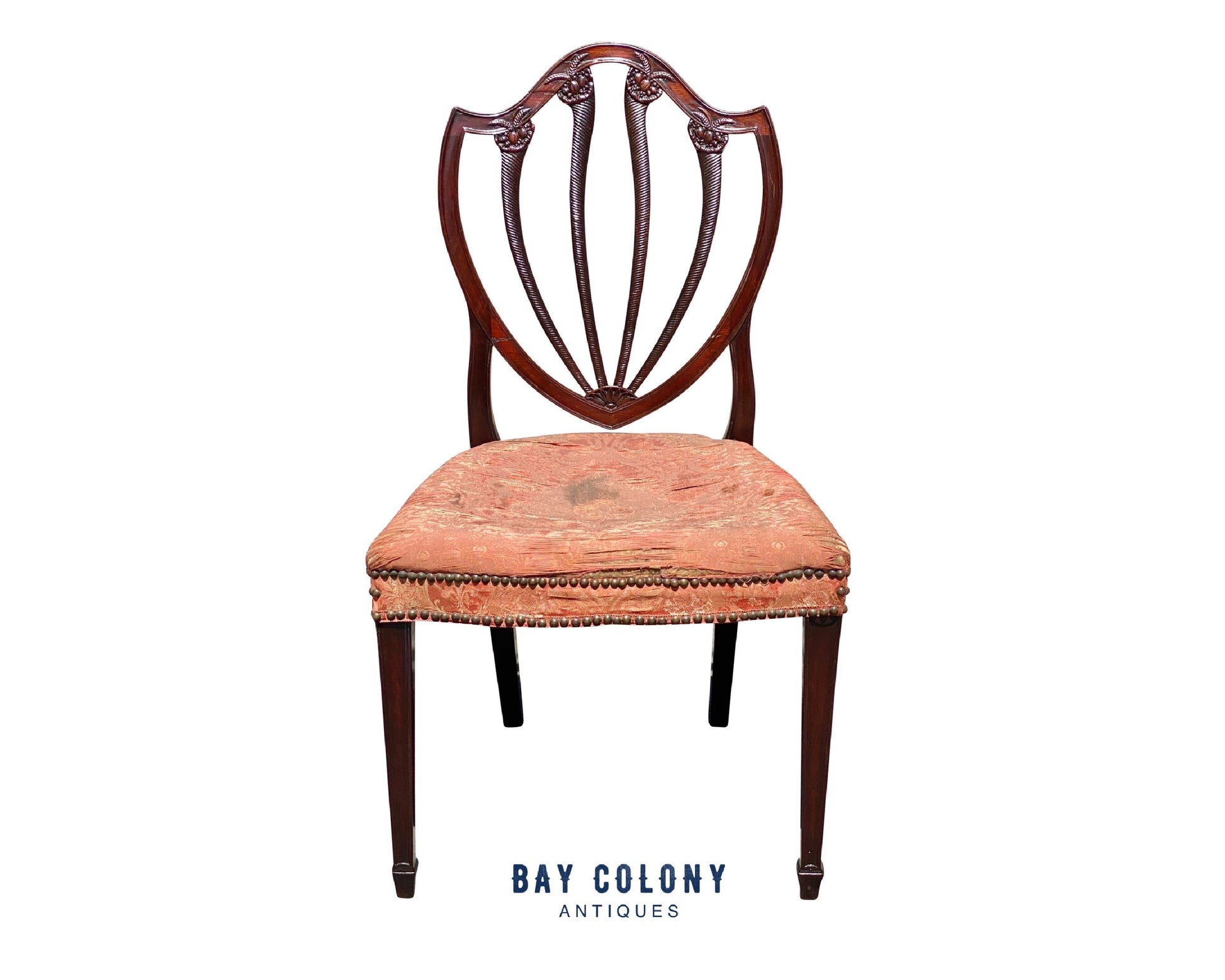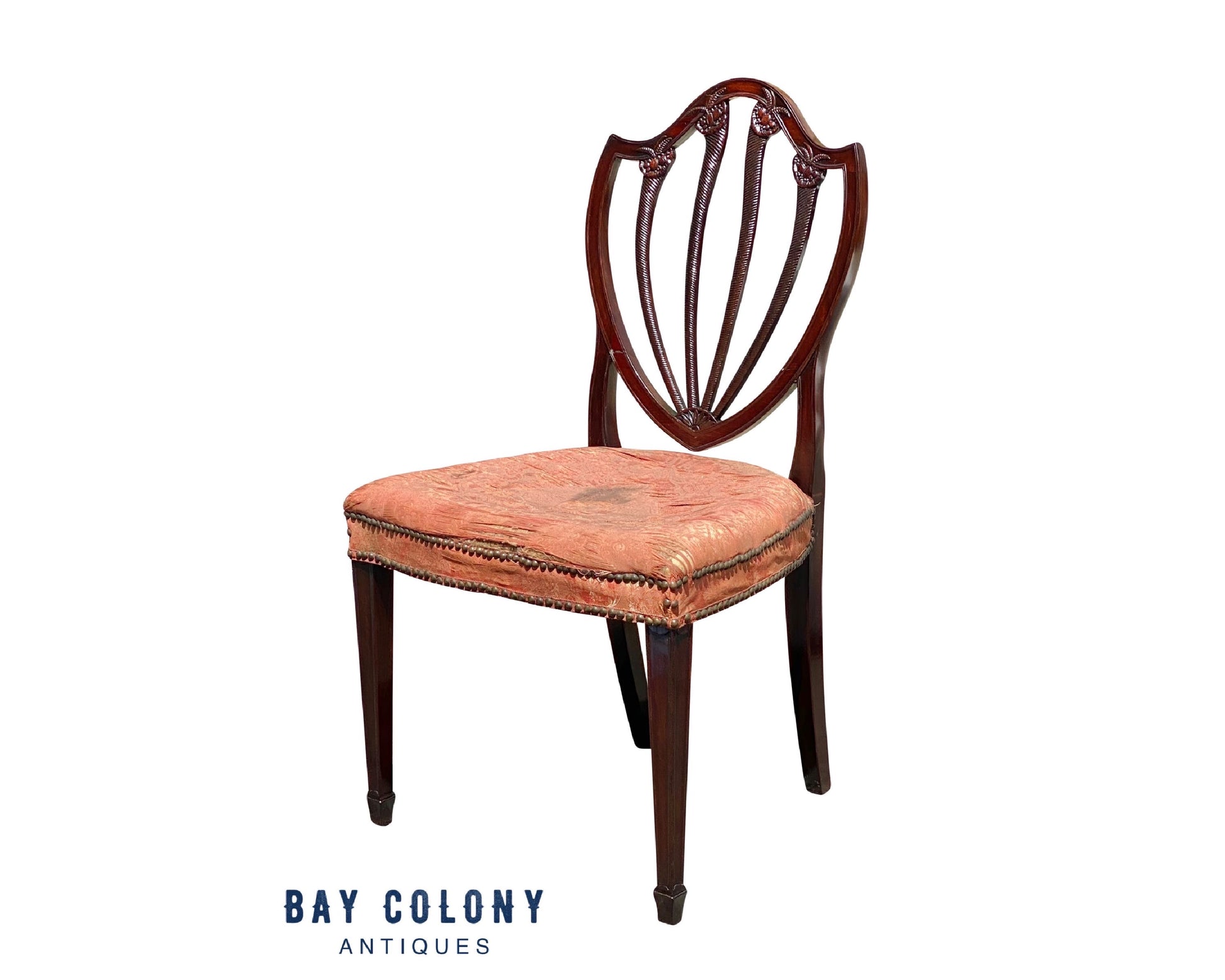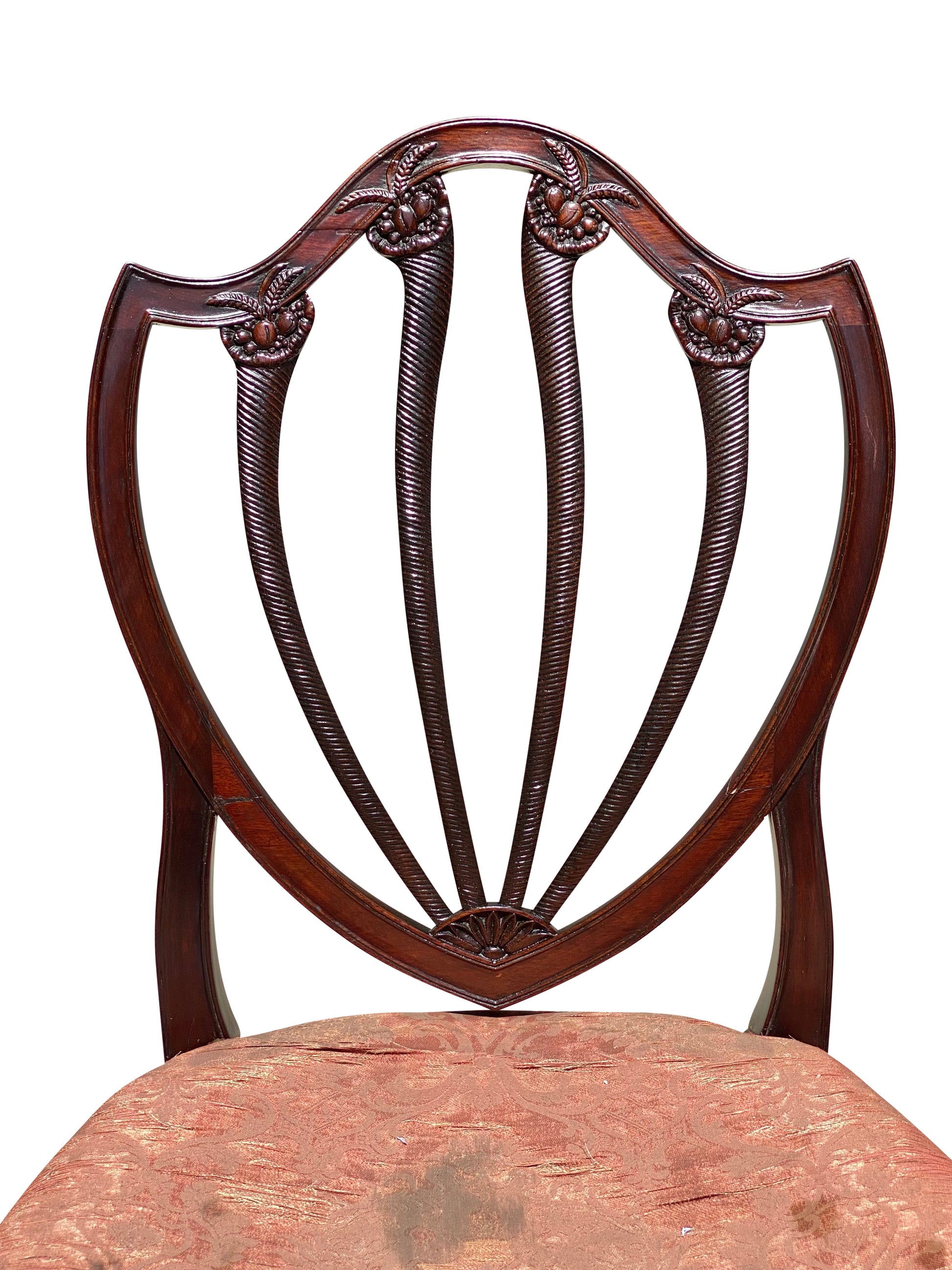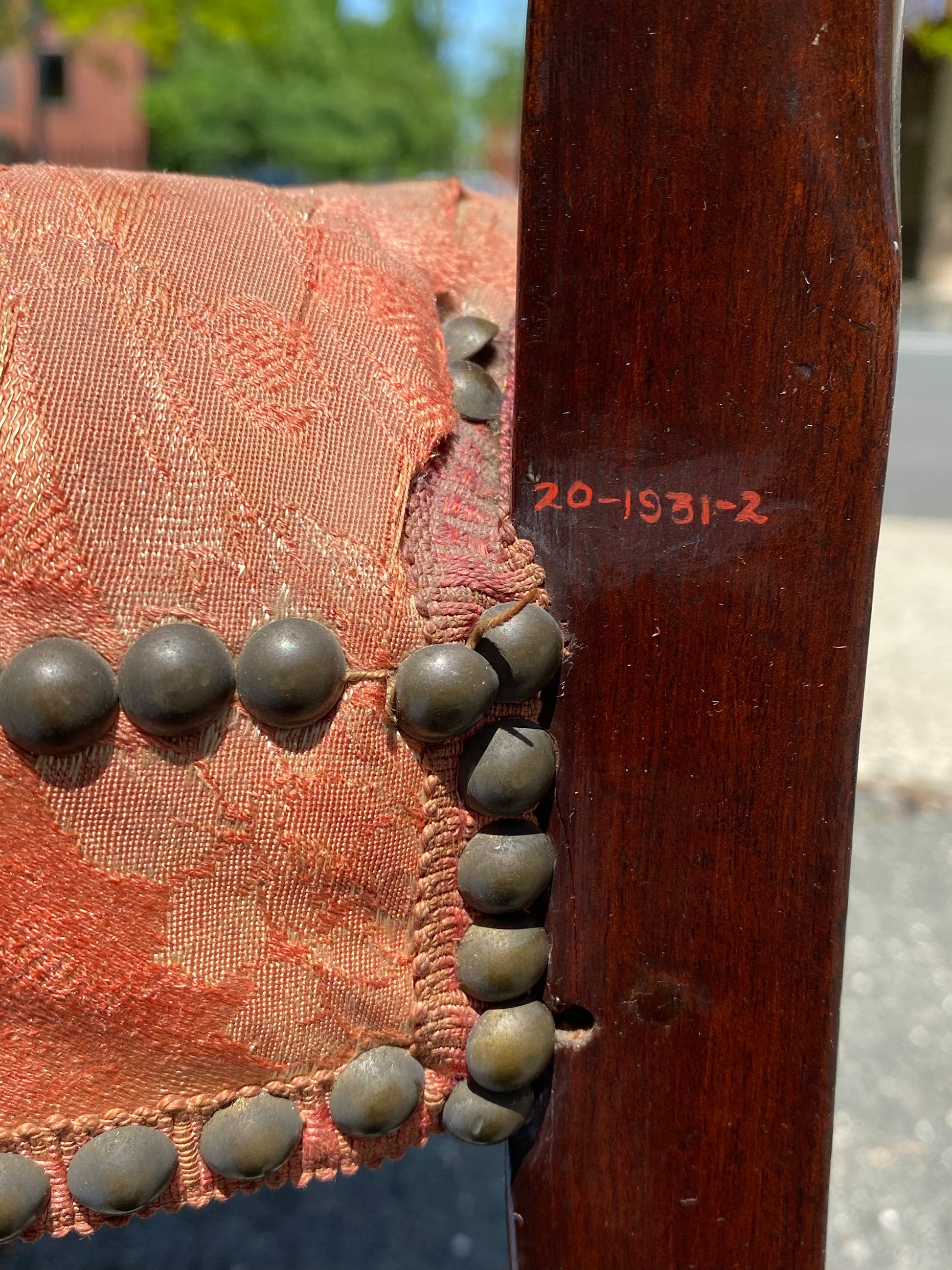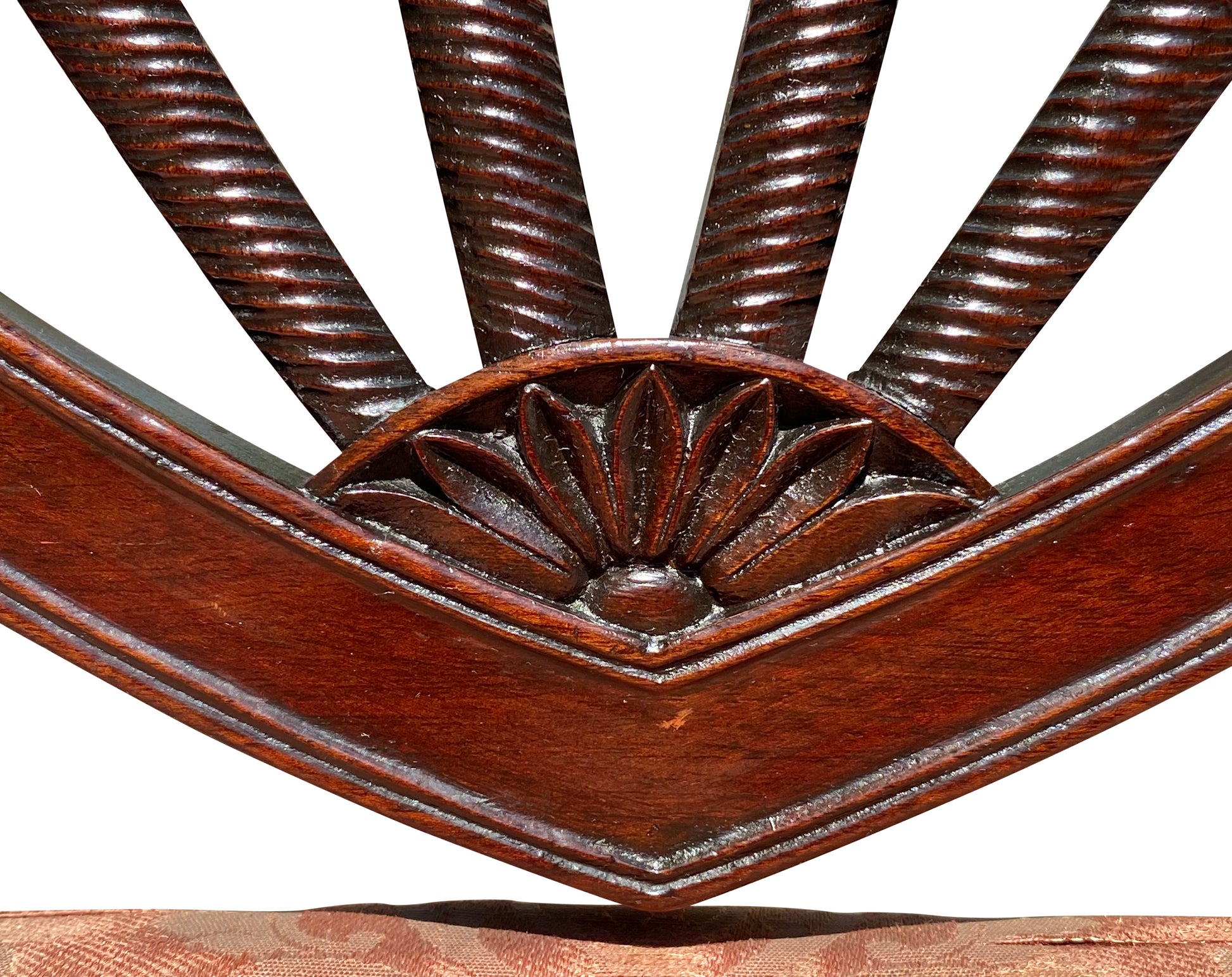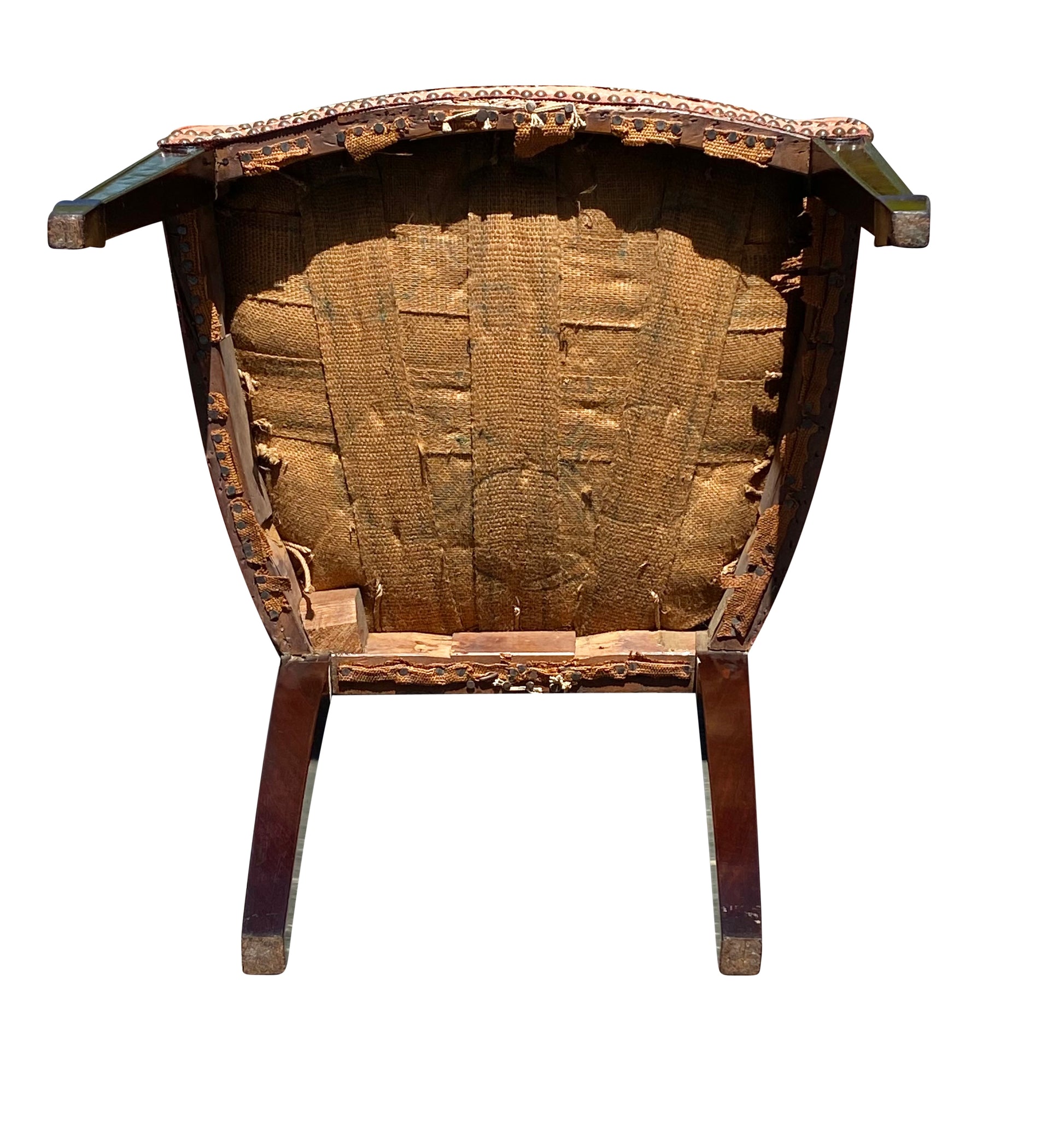Bay Colony Antiques
Important 18th Century Federal Shieldback Side Chair With Rare Cornucopia Design
Important 18th Century Federal Shieldback Side Chair With Rare Cornucopia Design
Couldn't load pickup availability
With our absolute highest compliments Bay Colony Antiques takes the utmost pleasure of presenting one of the finest American chairs produced throughout the height of the late 18th century. This chair is a remarkable example of the high federal style which dominated American design in the years following the American Revolutionary War. We strongly believe this chair to be an absolute masterpiece produced by the famous American carver Samuel McIntire and have attributed the piece to the workshop of the late master carver. Anyone familiar with the early history of Salem Massachusetts or those whom have studied the tradition of elite carved furniture and architectural interiors of New England will have some anecdotal knowledge of the large body of work produced by McIntire and his followers. In his era McIntire's work was in high demand from the wealthiest patrons of the port cities surrounding Northeastern New England and his carving labors can be observed in some of the finest museums and private collections in the country. We owe much to the great American furniture scholar Israel Sack who spent decades chronicling the career of Samuel McIntire and those who worked within his circle of craftsmen. Throughout the earlier part of the 19th century the influence of McIntire's carving designs were emulated by numerous cabinetmakers and this discipline of fine furniture is often attributed as the school of Samuel McIntire. These labors are generally found in grand mahogany case furniture as the association of furniture makers and woodworkers of Salem, Massachusetts had a generation before formed joint venture importation companies which funded shipping vessels to endeavor south towards Honduras and Santa Domingo in pursuit of the finest grades of tropical mahogany known to exist in the world. The furniture produced in Salem Massachusetts during the 18th century is widely characterized for being constructed from the finest old growth mahogany the world over.
This chair was constructed at the pinnacle of the American federal movement most likely in the last decade of the 18th century. A special grade of exotic mahogany was used to build this chair and the woodwork has remained largely untouched with only periodic cleaning and light maintenance throughout the past two centuries. The back of the chair is a joined and molded frame forming a stylized shield back design with particular emphasis placed on the high arching serpentine chair crest. In our experience federal shield back dining chairs are usually not as contoured so we believe that the decision to elongate the carved splats and accentuate the curved form of the shield was a deliberate design choice to make this chair superior in form to all of its known counterparts. The entire aesthetic of the chair is defined by the four brilliantly carved and contoured back splats. Each splat is profusely carved with cornucopia stylizations, also known as "horns of plenty", which is chosen to emphasize the grandeur and abundance of the early American republic. Anyone from a furniture scholar to a casual collector can clearly observe the depth and intricacy of each carved element and reason that the carvings are the labor of a master wood carver. The back of the chair is constructed with a fine splayed form which provides a higher level of comfort to the sitter along with the curved seat rail which contours to the back of a person's legs. This chair is supported by two front tapered legs ending in spade feet and splayed rear legs which flow in a single piece right up to the shield back allowing for additional strength and support. The chair is very sturdy and well suited for continued use provided that it is respected for the early American treasure that it is. We note the deaccession numerals in red on the underside and back of the chair frame. For those unfamiliar, this is a standard practice for inventory control of important museums and institutions with American art in their collections. We have a good idea of which collection this belonged to and will share that with the next owner of this chair but we felt it in better taste to not include it in the marketing. We have also left the antique fabric alone on the chair believing it to be an appropriate representation as to how a chair of this magnitude should be upholstered. It is our great fortune to have come to own this American furniture master piece and we sincerely hope to place it in a deserving collection where it will be cherished for generations to come.
Share
